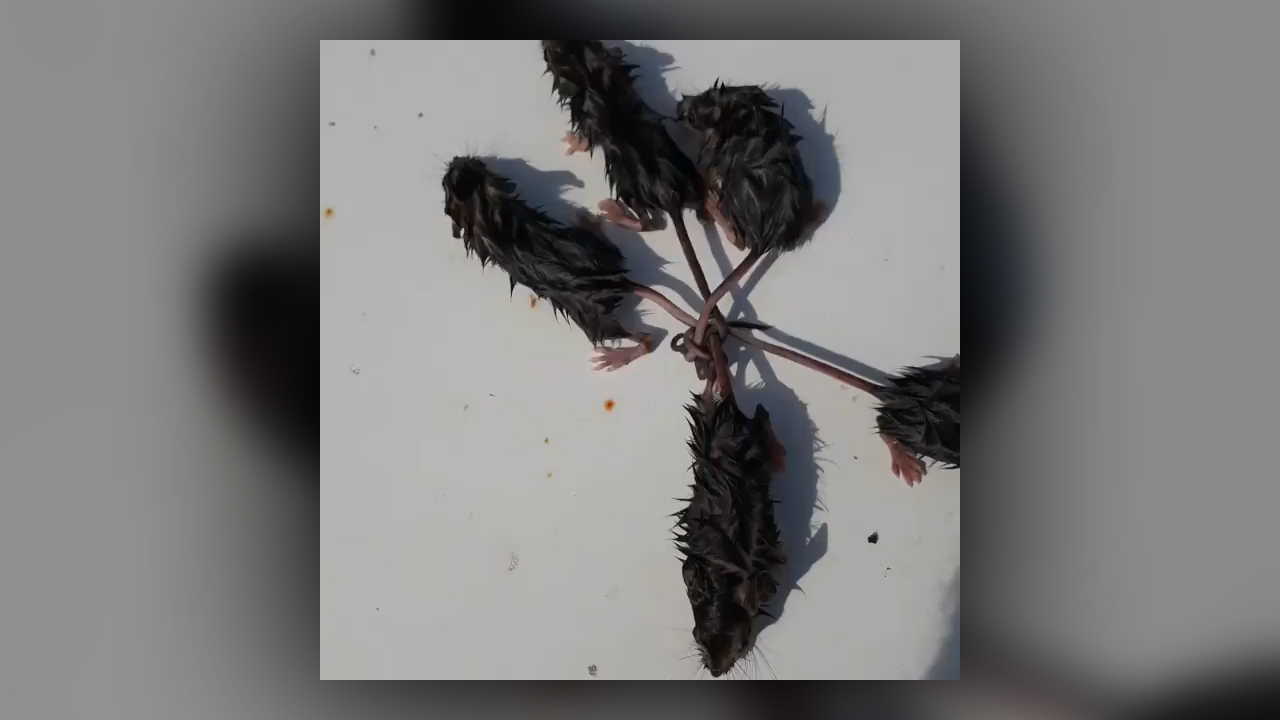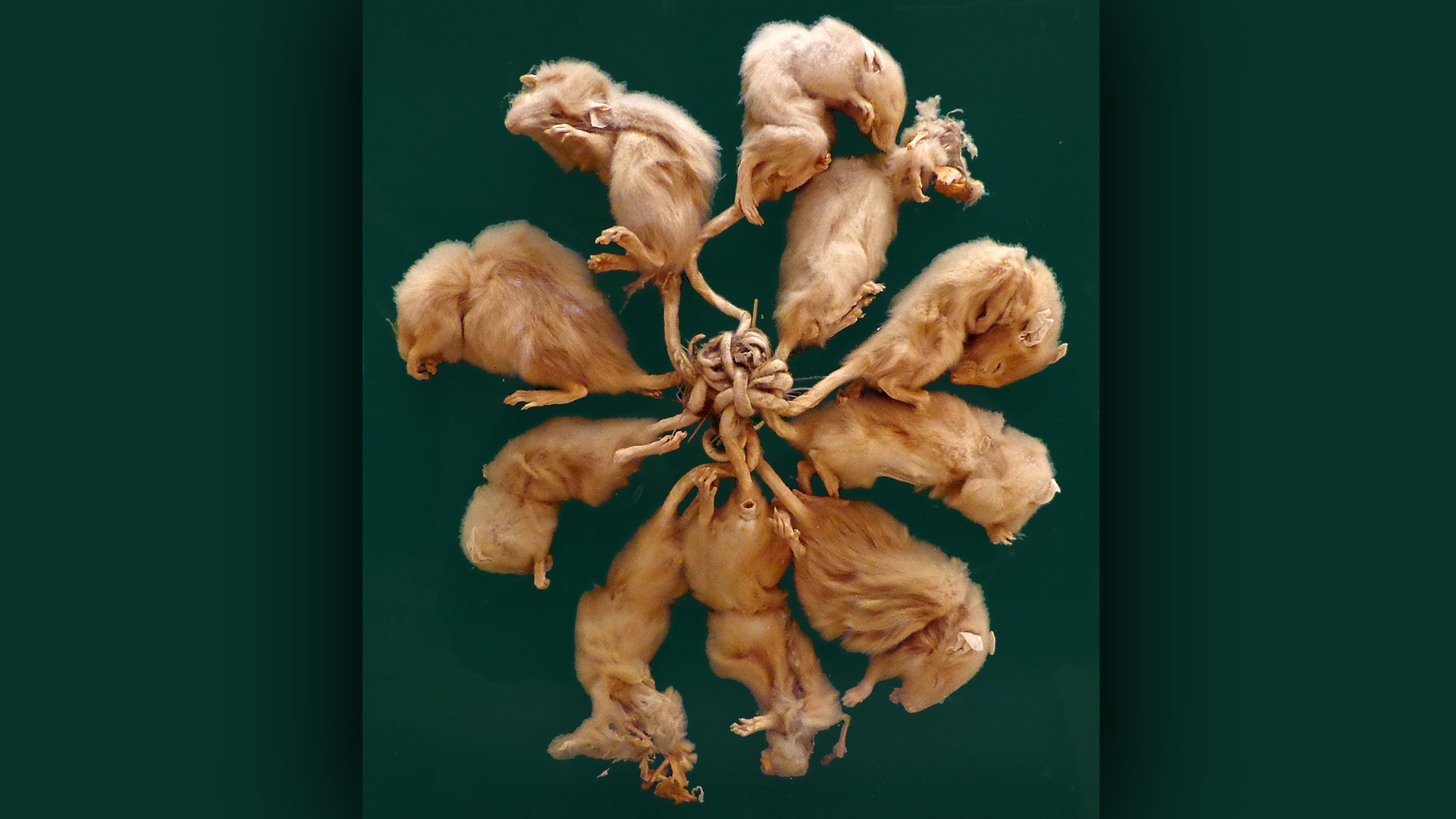Soggy rodents tangle their tails in one big knot in horrifying 'rat king' video
A farmer in the Stavropol region found the waterlogged "king."

When a Russian farmer's field flooded recently, he discovered an unexpected "royal" visitor among the puddles: a so-called rat king.
This grandiose term describes a group of rats whose tails become knotted together so that the rats can't free themselves — a rare (and horrific) phenomenon that has inspired myths and legends for centuries.
Alibulat Rasulov, a landowner in the Stavropol region in southwestern Russia, found one such rat king in his field. On Aug. 21, Rasulov shared two videos on Instagram that showed five small, bedraggled rats with their tails hopelessly tangled. He titled them (in Russian) "The Rat King is found alive. Part one" and "The Rat King was found alive for the first time. Part two" in the Instagram posts, which have since collected more than 30,000 views.
Related: Sting, bite & destroy: Nature's 10 biggest pests
In the first video, which is just under 3 minutes long, Rasulov aims the camera at a flooded patch of land, where something is wriggling under the leaves at the edge of the water. He moves some vegetation to reveal two holes in the bank, which could be burrows dug by small animals. Near one of the holes is a cluster of five small, soaking wet rats with their knotted tails wrapped around a plant stem. Rasulov lifts them out of the water, removes the plant and places the rats on dry land, but though they scramble to escape, their tails remain firmly tied together.
The second video is less than 30 seconds long, but it reveals that this particular rat king's story has a happy ending. Rasulov's hand lifts and repositions a few of the rats one by one to loosen the knot, and finally, their tails release; the "king" is no more, and the rats are free.
A post shared by Алибулат Расулов (@__alibulat__rasulov__)
A photo posted by on
However, not all rat kings are so lucky. Several deceased rat kings — their tails still tightly knotted — are preserved in the collections of natural history museums, such as the Strasbourg Zoological Museum in France, which possesses a 10-rat "roi de rats" specimen that was found in Dellfeld, Germany, and was donated to the museum in 1895.
Sign up for the Live Science daily newsletter now
Get the world’s most fascinating discoveries delivered straight to your inbox.

"This curious phenomenon" of tangled tails is known in two rat species — black rats (Rattus rattus) and Norway rats (Rattus norvegicus) — but it has also been observed in squirrels and cats, according to the museum.
Indeed, in 2017, four baby squirrels in Bangor, Maine, entangled their tails, and a bystander captured their predicament on video, Live Science reported that year. Young squirrels sleep huddled close together in their nests, with their tails wrapped around their siblings, and it's possible that their tails trailed through something sticky, like tree sap, that then solidified. The more the babies struggled to free themselves, the tighter the knot became, experts told Live Science in 2017.
As for why rats' tails become knotted, "the rat king has still not revealed his secret," the Strasbourg Zoological Museum says.
Originally published on Live Science.

Mindy Weisberger is an editor at Scholastic and a former Live Science channel editor and senior writer. She has reported on general science, covering climate change, paleontology, biology and space. Mindy studied film at Columbia University; prior to Live Science she produced, wrote and directed media for the American Museum of Natural History in New York City. Her videos about dinosaurs, astrophysics, biodiversity and evolution appear in museums and science centers worldwide, earning awards such as the CINE Golden Eagle and the Communicator Award of Excellence. Her writing has also appeared in Scientific American, The Washington Post and How It Works Magazine. Her book "Rise of the Zombie Bugs: The Surprising Science of Parasitic Mind Control" will be published in spring 2025 by Johns Hopkins University Press.










